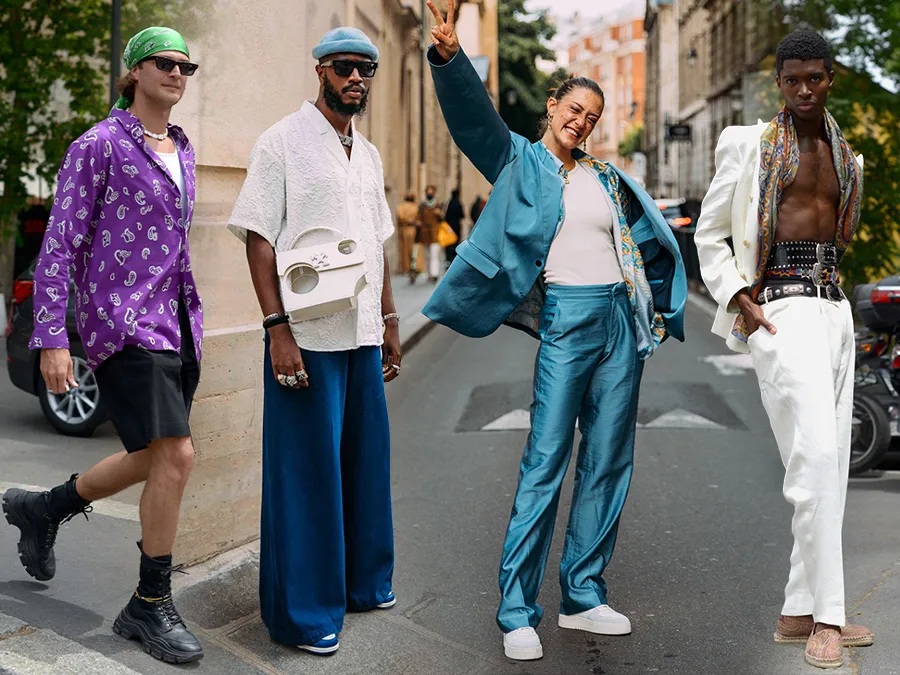The evolution of fashion often follows a dynamic trajectory, with trends rising from unexpected places. One such journey that has captured the fashion world’s attention is the transformation of tracksuits – once relegated to the realm of casual streetwear, they have now become a prominent fixture in high fashion circles. This metamorphosis tells a compelling tale of how utilitarian sportswear has transcended its origins to become a symbol of style and luxury.
I. The Humble Beginnings:
Tracksuits made their first appearance in the mid-20th century as athletic wear designed for comfort and functionality. Originally crafted from simple materials like cotton or polyester, they were popularized by athletes and sports enthusiasts for their ease of movement. This utilitarian approach was the cornerstone of their design, with little emphasis on aesthetics or style.
II. Streetwear Revolution:
In the late 20th century, tracksuits found a new home on the streets, becoming synonymous with urban youth culture and the burgeoning hip-hop scene. Brands like Adidas and Nike played a pivotal role in this transition, transforming the name collective tracksuit into a streetwear staple. The oversized silhouettes, bold logos, and vibrant colors became iconic elements, shaping the tracksuit’s identity as a symbol of casual coolness.
III. Celebrity Endorsements:
The tracksuit’s journey to high fashion was propelled by celebrity endorsements. A-listers and musicians began incorporating tracksuits into their off-duty wardrobes, making them a symbol of laid-back luxury. Fashion-forward personalities like Run-DMC and Madonna were instrumental in elevating the tracksuit’s status, showcasing its versatility and adaptability to different styles.
IV. Designer Collaborations:
As the tracksuit gained popularity among celebrities, luxury designers took notice and started collaborating with sportswear brands to create high-end iterations. These collaborations marked a significant shift, infusing named collective tracksuit tracksuits with premium materials, intricate detailing, and exclusive designs. Suddenly, tracksuits were no longer confined to the streets but found their place on the runways of prestigious fashion shows.
V. Redefined Silhouettes and Fabrics:
High fashion’s embrace of tracksuits led to a redefinition of their silhouettes and materials. Traditional sportswear fabrics were replaced with luxurious materials like silk, velvet, and cashmere. Designers experimented with tailored cuts and avant-garde details, transforming the tracksuit into a sophisticated and versatile ensemble suitable for a variety of occasions.
VI. Runway Success:
The turning point in the tracksuit’s ascent to high fashion was its triumphant appearance on renowned runways. Fashion houses like Gucci, Balenciaga, and Louis Vuitton showcased tracksuits in their collections, proving that these once-casual garments could seamlessly integrate into the world of luxury fashion. The juxtaposition of athleisure with high-end aesthetics became a defining characteristic of this new era in tracksuit evolution.
VII. Cultural Impact:
The tracksuit’s journey from streetwear to high fashion reflects broader cultural shifts. Its acceptance by luxury designers signifies a blurring of traditional fashion boundaries, as comfort and functionality take precedence over conventional notions of opulence. The tracksuit has become a symbol of inclusivity, transcending socio-economic and cultural divides.
The Tracksuits Chronicles is a testament to the transformative power of fashion, where a humble athletic garment has journeyed from the sports field to the streets and ultimately onto the runways of high fashion. This evolution demonstrates the industry’s ability to embrace and reinterpret everyday items, turning them into symbols of cultural significance and style. The tracksuit’s rise to high fashion not only reflects changing tastes but also signifies a broader shift towards a more inclusive and dynamic fashion landscape.
